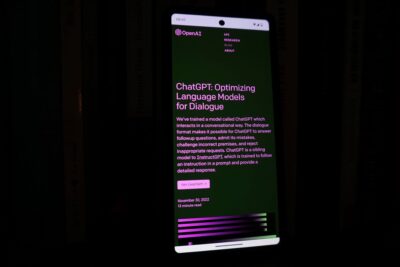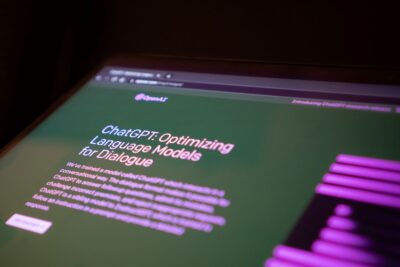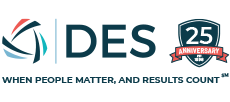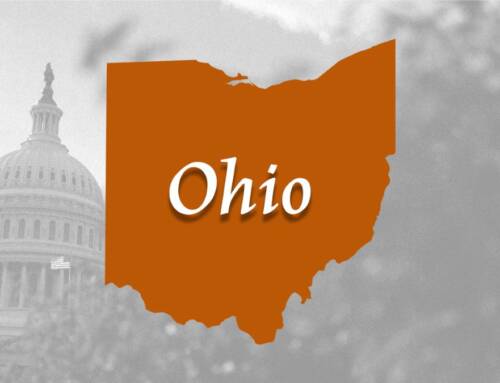As the world becomes increasingly digitized, HR professionals are turning to AI-powered tools like ChatGPT to streamline communication with employees and clients alike. Rather than drafting individual emails or responses, you can use AI to generate customized messages that are tailored to each person’s needs and preferences. This can help improve communication and boost engagement, particularly for large organizations or those with dispersed workforces, allowing them to handle client communications more efficiently.
However, relying on AI to handle confidential and legal HR matters raises important compliance concerns. HR team members should be confident that any AI-generated communications comply with HR regulations and protect privacy. This requires specialized knowledge and training to use the technology effectively and ethically.
4 Key Considerations Before Using AI Tools in Your HR Department

When using AI to handle confidential and legal HR matters, there are several compliance issues that can arise:
- Data Privacy: HR professionals should guarantee that any AI-generated communications comply with data privacy regulations and protect employee privacy. When determining what information you should use to prompt ChatGPT, Cyberhaven’s Ting suggests following a simple rule: Don’t share anything you wouldn’t want to share publicly. Use appropriate discretion when using AI tools like ChatGPT. [3]
- Discrimination: AI-powered tools can perpetuate bias and discrimination if the data used to train the AI is biased or discriminatory. HR should be aware of these risks and take steps to ensure that all communications are fair and in line with company values.
- Legal Compliance: Any communications must comply with HR regulations and laws, including those related to discrimination, harassment, and retaliation.
- Engagement: HR must ensure that any communications are personalized and relevant to each person’s needs and preferences.
Point 2 above is worth digging into a little more deeply. Tools like ChatGPT are only as unbiased as the data they are trained on, and if the data used to train the AI is biased or discriminatory, this can be reflected in the content they produce.
The lack of adequate representation of women and people of color in the technology sector, coupled with the limited inclusion of these groups in the data influencing AI, has resulted in the creation of technology that caters to a narrow segment of the global population. Shockingly, the proportion of black employees in technical positions at Facebook and Google is less than 2%. Similarly, when evaluating eight major tech companies, Bloomberg found that women constitute only approximately one-fifth of the technical workforce in each organization [1].
HR team members can mitigate these risks and take steps to ensure that AI-generated communications are fair and unbiased by checking every piece of content. In other words, it can’t quite be trusted yet. It’s absolutely imperative that you review and fact check the correspondence manually after the draft is generated to avoid any biases or discriminatory language.
Use AI to Create Your HR Document Templates
One practical way to leverage the benefits of AI, plus minimize compliance risks, is to use these tools only for template creation. Building out generic frameworks and verbiage that are totally devoid of personal information or data is a smart approach, saving you a lot of time but still allowing you to customize each piece of content before it’s used. This lets you build more human touch points into the generation process, reducing the risk of violating any HR regulations or privacy requirements.
There are many ways that you can ask ChatGPT to generate your templates, but the easiest way is by creating HR-specific prompts. The more specific your parameters are, the more accurate the result that ChatGPT can generate for you. Below, we have listed an example prompt for an email template that you can use and the results that have been generated from ChatGPT.
Prompt Example:
“I want you to write 3 different rejection emails to a candidate that has applied for a job with [example business]. To get your information, I want you to ask me 1. what competencies we saw them strong in, 2. what we appreciated about their application, and 3. what we saw in the final candidates that we did not see during the process with them. You want the candidate to feel like you really saw their strengths. OK?” [2]
Email generated with Chat GPT for Gmail:
Rejection Email 1:
Subject: Thank you for your application to [example business]
Dear [Candidate’s Name],
I hope this email finds you well. Firstly, I want to express my sincere appreciation for taking the time to apply for the [Job Title] position at [example business]. We were impressed with your qualifications and the strengths you demonstrated throughout the application process.
We particularly noticed your exceptional [Competency 1]. Your skills and experience in this area stood out and showcased your expertise in [specific aspect]. We truly recognize the value and potential you possess in this field.
Moreover, your application demonstrated a high level of [Appreciated aspect]. Your attention to detail, clear communication, and enthusiasm for [specific area] were evident and greatly appreciated by our team.
After careful consideration and evaluating the final candidates, we have chosen to proceed with candidates whose profiles more closely align with the specific requirements of the role. While we were impressed with your strengths, we ultimately found candidates who exhibited a combination of [additional competencies] that closely matched the needs of our organization.
I genuinely want to express our gratitude for your interest in [example business]. We encourage you to continue pursuing your career aspirations, as your skills and strengths have not gone unnoticed. We will keep your application on file for future opportunities that may arise.
Wishing you the very best in your professional endeavors.
Kind regards,
Jane Doe
Hiring Manager
[example business]
www.examplebusiness.com
[janedoe@examplebusiness.com]
[Phone number]
Rejection Email 2:
Subject: Appreciation for your application to [example business]
Dear [Candidate’s Name],
I hope this email finds you well. I want to take a moment to express our sincere appreciation for your application to the [Job Title] position at [example business]. Your qualifications and accomplishments stood out, and we were impressed by the strengths you displayed throughout the hiring process.
Your expertise in [Competency 1] was evident and highly commendable. We recognized your exceptional [specific skill] and how it aligns with the needs of the role. It is clear that you have honed your abilities in this area, and we value the dedication and proficiency you bring.
Additionally, we appreciated your [Appreciated aspect] that was evident in your application. Your [specific quality] and [specific accomplishment] demonstrated your commitment to excellence and attention to detail, which are traits we highly value at [example business].
Although we recognize your strong competencies and positive attributes, after careful consideration and comparison with other candidates, we have decided to proceed with individuals whose profiles closely match the specific requirements of the position. We found that the finalists exhibited a combination of [additional competencies] that we felt best met our immediate organizational needs.
We genuinely appreciate your interest in joining our team and the effort you put into the application process. Your skills and strengths have left a lasting impression on us. Please know that your application will remain on file, and we will keep you in mind for future opportunities that may be a closer fit.
Thank you again for considering [example business]. We wish you continued success in your professional journey.
Warm regards,
Jane Doe
Hiring Manager
[example business]
www.examplebusiness.com
[janedoe@examplebusiness.com]
[Phone number]
Rejection Email 3:
Subject: Acknowledging your strengths and application to [example business]
Dear [Candidate’s Name],
I hope this email finds you well. I wanted to personally reach out and extend our gratitude for your application to the [Job Title] position at [example business]. Throughout the hiring process, we noticed several strengths and qualities in your profile that impressed us.
Your expertise in [Competency 1] was truly exceptional. Your accomplishments and skills in this area demonstrated a deep understanding and a proven track record of success. Your dedication and proficiency in [specific skill] were particularly noteworthy.
Furthermore, we appreciated your [Appreciated aspect] as showcased in your application. Your [specific quality] and [specific accomplishment] displayed a level of professionalism and drive that we value at [example business]. It is evident that you possess the passion and commitment necessary to excel in your field.
While we recognize your strong competencies and admire your accomplishments, after careful consideration and comparing the candidates, we have decided to move forward with individuals who closely align with the specific requirements of the role. We identified candidates with a blend of [additional competencies] that we believe will meet our organizational needs effectively.
We genuinely appreciate your interest in joining [example business]. Your skills and strengths have left a lasting impression on us. Your application will be kept on file, and we will certainly consider you for future opportunities that align more closely with your qualifications.
Thank you again for considering [example business]. We wish you continued success and fulfillment in your career journey.
Best regards,
Jane Doe
Hiring Manager
[example business]
www.examplebusiness.com
[janedoe@examplebusiness.com]
[Phone number]
As you can see from the example prompt, ChatGPT can be a great tool for helping you to create HR templates for a variety of functions. Remember that these are meant to be a guide to help you generate an HR template that you can then customize for your specific industry and company.
Top 5 ChatGPT Prompts for an HR Department
Below, we have chosen our favorite prompts that you can use in your day-to-day operations:
- “Act like a researcher. Give me a list of keywords for a job description that I will provide you with that I can use to find a candidate for the position. Act like an expert in this field, include additional keywords that may not be in the job description.” [2]
- “Suggest 10 commonly asked questions employees will ask HR. Provide template responses for each, leaving gaps where I can fill in the correct information.” [5]
- “Write a brief LinkedIn outreach message for a [job title] with several years of experience building [named competency] and implementing [main job function] for [company]. [2]
- “I will give you a job description and you will write an email trying to engage a candidate. Start with their potential interests in career growth, then present the opportunity. Outline the benefits and potential, be convincing. Use industry terminology. Be brief, do not use unnecessary words. Be friendly. Use call-to-action, add a sense of urgency.” [2]
- “What are some strategies for recruiting and hiring employees?” [4]
What’s Your Takeaway?
Overall, while AI-powered tools like ChatGPT offer numerous benefits to HR professionals, it is important to use them responsibly and with awareness of the potential ethical and compliance concerns. Invest in giving your HR professionals the specialized training they need, and implement policies and procedures to act as guard rails for AI-generated communications.
FAQs using AI in HR
How can HR departments utilize tools like ChatGPT in their processes?
They can leverage ChatGPT to automate responses to frequently asked HR-related questions, provide instant support to employees regarding policies and procedures, assist in onboarding processes, and even conduct preliminary screenings of job applicants through interactive chat-based interviews.
Are there any considerations HR departments should keep in mind when using ChatGPT or similar AI tools?
Firstly, it’s important to ensure that the tool’s responses align with company policies and legal requirements. Regularly reviewing and updating the AI’s knowledge base is crucial to maintain accuracy and relevance. Additionally, HR departments should be mindful of potential biases in AI-generated responses and periodically assess the tool’s performance to address any issues or gaps in its understanding of HR-specific topics.
What is privacy by design, and how does it apply to AI tools in HR?
Privacy by design is an approach that integrates privacy considerations into the design and implementation of systems, processes, and tools from the outset. In the context of AI tools in HR, privacy by design involves incorporating privacy features such as data minimization, purpose limitation, and secure data handling into the development and deployment of AI applications.
How can HR departments ensure compliance with privacy standards on an ongoing basis?
HR departments can ensure compliance with privacy standards by regularly monitoring and auditing data handling practices, conducting privacy impact assessments for new AI tools or processes, keeping up-to-date with changes in relevant regulations, providing ongoing training to employees, and promptly addressing any identified privacy breaches or concerns.
What are the future implications of AI in HR and privacy concerns?
The future implications of AI in HR are promising, as AI can continue to revolutionize HR processes and enhance decision-making. However, privacy concerns will remain crucial. HR departments must stay vigilant, adapt to evolving privacy regulations, and ensure that the use of AI tools aligns with ethical and legal standards to protect employee privacy and maintain trust.




